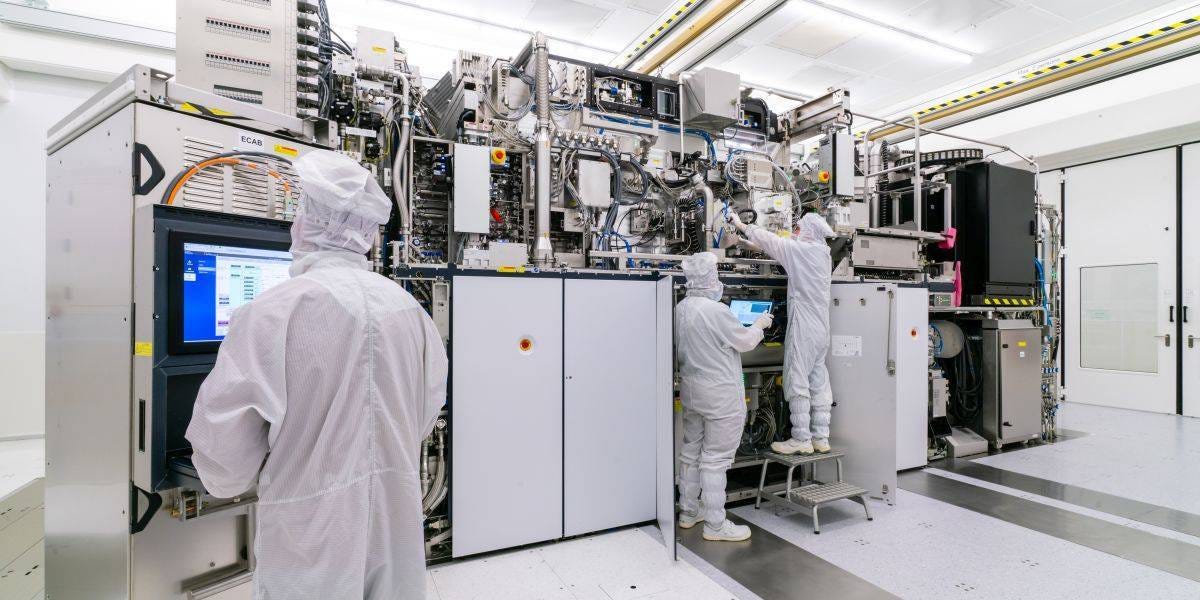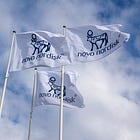Q1 Results: LVMH, ASML, Basic-Fit
LVMH continues to struggle, while ASML and Basic-Fit are executing well
Q1 earnings season has kicked off, and three of my portfolio companies have already reported. LVMH continues to face headwinds, while ASML and Basic-Fit are executing as planned.
Today, I’ll walk you through the key findings from each earnings call.
What You’ll Read Today
LVMH
ASML
Basic-Fit
LVMH
Last Monday, LVMH reported Q1 results, with organic revenue down 3% year-over-year. Total revenue reached €20.3 billion. Regional performance was mixed: Asia (excluding Japan) remained weak, down 11%, while other regions were relatively stable.
By segment, Wines & Spirits saw a 9% organic decline. Rumors of a potential spin-off surfaced during the quarter, but LVMH firmly denied them. Fashion & Leather Goods declined 5%—arguably the biggest surprise of the quarter. Perfumes & Cosmetics were down 1%, Selective Retailing also fell 1%, and Watches & Jewelry remained stable.
In the Q&A, management noted that Louis Vuitton performed slightly above the segment average, while Dior underperformed. No major impact from tariffs has been seen yet, but pricing will be considered as a lever for certain Maisons if needed. Management emphasized that pricing strategy is highly brand-specific. The company can’t just raise prices by a certain amount for each brand.
Despite ongoing weakness in the sector—especially in Asia—LVMH stressed the importance of continuing to invest in marketing and long-term growth.
Questions around tariffs and the US market continued. There’s still capacity for increased production in the US, but relocating is not something that can be done overnight. LVMH is hoping for a positive resolution on tariffs but acknowledged that the outcome is ultimately out of their hands.
I recall CEO Bernard Arnault, during the 2024 results, pointing out that Louis Vuitton and Tiffany started the year strong, with double-digit growth in January. It’s strange how that has developed. Arnault himself wasn’t present during the call, so we’ll have to hear more from him during the half-year results.
Since the call focused only on revenue, we don’t know much else. What’s clear, however, is that 2025 is off to a rough start, and the downturn in Asia is dragging on longer than expected. I doubt this performance is due to poor execution—LVMH is often seen as a bellwether for the luxury sector, and the broader industry isn’t recovering as quickly as hoped. Still, the thesis for LVMH for me revolves around a recovery in the luxury sector sooner rather than later.
ASML
Yesterday, ASML reported strong Q1 results. Revenue was €7.7 billion, up from €5.3 billion a year earlier, with €2 billion generated by the Installed Base business. Gross margin came in higher than expected at 54%, driven by a favorable EUV mix and the achievement of customer-specific performance targets.
Operating income rose to €2.7 billion from €1.4 billion last year, while net income nearly doubled to €2.4 billion. Order intake for the quarter was €3.9 billion, including €1.2 billion for EUV systems.
ASML reaffirmed its full-year 2025 revenue guidance of €30 to €35 billion, despite ongoing uncertainty around tariffs. For Q2, the company expects revenue between €7.2 and €7.7 billion, with around €2 billion again coming from Installed Base. Gross margin guidance is between 51% and 53%.
ASML also continues to return capital to shareholders, with €2.6 billion in share repurchases and €600 million in dividends during Q1. Management also indicated that 2026 is expected to be another year of growth.
During the Q&A, one analyst asked about recent reports that China is close to developing its own EUV technology. ASML responded that there is no material progress toward a viable product. Current developments are research-oriented. The company sees no evidence of a near-term product and believes it will take many years before China can produce a competitive EUV machine.
Overall, it was a solid quarter, even with the lower-than-expected order intake. Order intake tends to be lumpy, so I don’t put much weight on a single-quarter “miss”. Besides, ASML reiterated its full-year revenue guidance, with a midpoint of €32.5 billion.
The market, however, focused on the order intake and sent the stock down ~5%. I think that reaction is overdone. It’s also why management plans to stop providing order intake figures quarterly starting in 2026.
Basic-Fit
Basic-Fit reported a strong start to the year today, with Q1 revenue up 17% year-over-year to €332 million. The company added 213,000 members, bringing the total to 4.47 million—an increase of 10% compared to last year—despite opening just 41 clubs in the quarter.
Management reiterated full-year guidance:
Revenue between €1.375 and €1.425 billion
Underlying EBITDA less rent of €330 to €370 million
Around 100 new clubs openings
Positive free cash flow
With 41 clubs already opened in Q1, capital expenditures should be lower relatively lower in the coming quarters. That said, like LVMH’s recent update, this was a revenue update—so there are no detailed figures yet on capex or profitability.
Basic-Fit also secured a new €200 million credit facility to help manage upcoming debt obligations—specifically the €304 million in convertible bonds that mature in 2028. Bondholders have a put option in 2026, allowing them to demand early repayment. If the bondholders choose not to exercise that option, the facility won’t be used. Combined with expected cash flow, this should be sufficient to cover short-term debt obligations. It’s clear the company still isn’t generating enough cash flow to handle all repayments on its own, which was to be expected.
From the Q&A, a few things stood out:
The €40 million share repurchase program will begin in Q2.
The company now operates 1,200 mature clubs. In my model, I assume 1,100 mature clubs by the end of 2025, so this is great news.
Club rollout remains flexible, giving management another option to use be able to repay debt.
There are no concrete steps or updates about franchising yet.
A large increase in yield per member is expected over the coming year, driven by the new price plans.
On macro concerns—particularly the risk of a recession—CEO René Moos emphasized the company’s resilience during downturns: “In the past, we actually grew in that period [recession].” Drawing from experience, Moos knows that even in tougher economic times, people tend not to cut back on health and social life.
In case you missed it:
Disclaimer: the information provided is for informational purposes only and should not be considered as financial advice. I am not a financial advisor, and nothing on this platform should be construed as personalized financial advice. All investment decisions should be made based on your own research.






https://open.substack.com/pub/marcinparis/p/when-the-discreet-overtakes-the-grand?r=5ib925&utm_medium=ios
Would love your feedback on my article: When the Discreet Overtakes the Grand Part II
https://open.substack.com/pub/marcinparis/p/when-the-discreet-overtakes-the-grand-4f9?r=5ib925&utm_campaign=post&utm_medium=web&showWelcomeOnShare=true